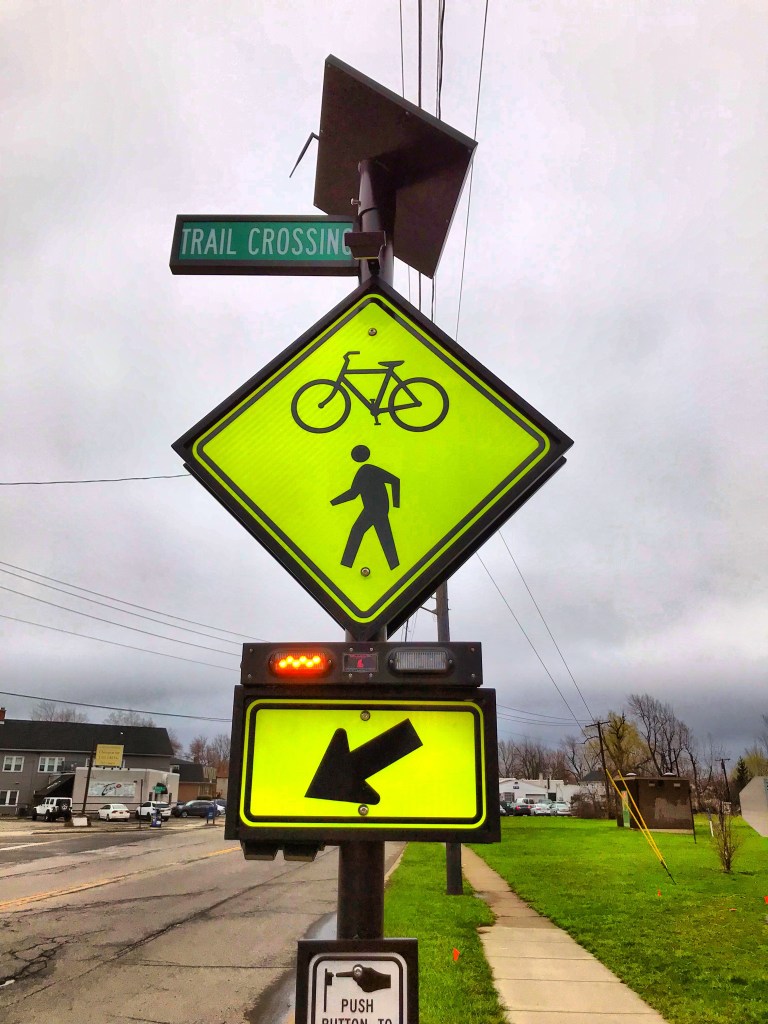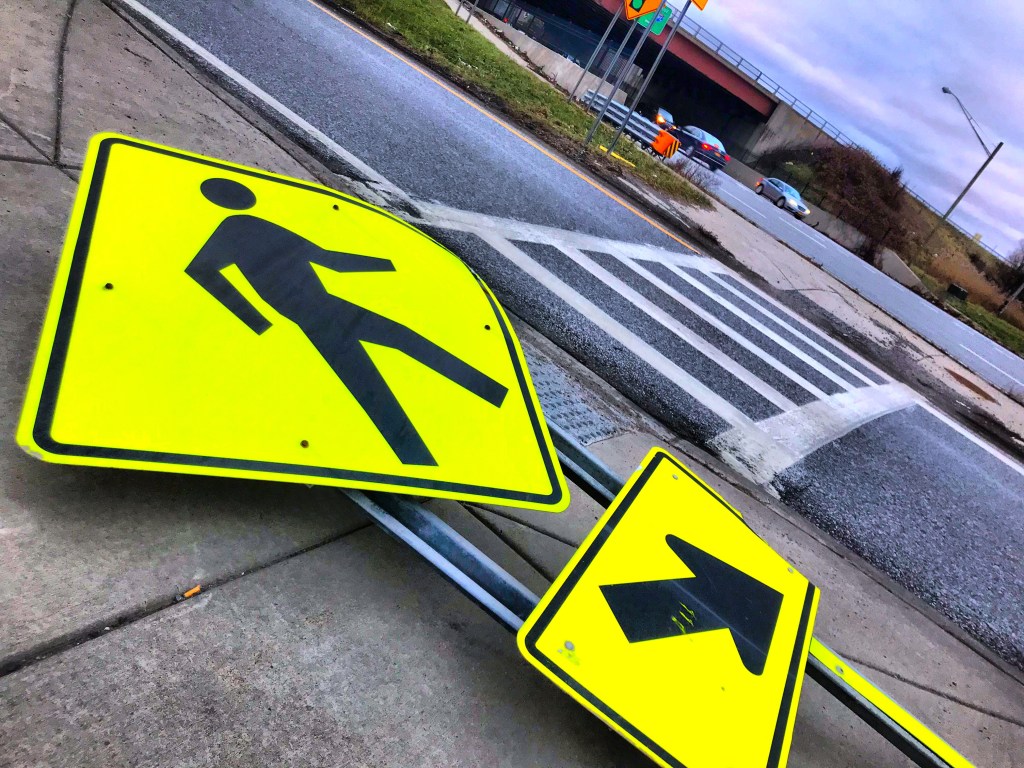
Written by Arian Horbovetz and originally published on The Urban Phoenix blog
A few nights ago I was riding my Onewheel through the residential streets of Rochester’s South Wedge neighborhood. I slowed as I approached a lightly traveled 4-way stop sign controlled intersection, where a car stopped and yielded the right of way to me as I had reached the intersection first.
A few minutes later, I tried to cross Rochester’s South Ave. while carrying my device across a crosswalk. And while the signage clearly states that pedestrians in the crosswalk have the right of way, 8 cars blew through said crosswalk before a car finally stopped and allowed me to pass.
Tonight I was trying to cross another street near Rochester’s historic Mt. Hope Cemetery (final resting place of Frederick Douglass and Susan B. Anthony) at a RRFB-controlled crosswalk. I pressed the button which activated the flashing yellow lights indicating that a pedestrian is ready to enter the crosswalk, and subsequently watched in horror as 19 cars drove through the crosswalk without so much as a brake tap.

Here’s my question… why aren’t pedestrian crosswalks simply controlled with a traditional stop sign? For the life of me I’ve never been able to understand this. Let’s break it down…
If we think of stop signs as safety signals for everyone on our streets, then why is it that our most vulnerable population, people on foot, only receive “yield” status?

If we claim that a pedestrian always has the right of way in a crosswalk, why do we treat pedestrians as “yield” worthy instead of “STOP” worthy like we do cars? Why doesn’t every non-signal-controlled crosswalk simply have a universally recognizable stop sign instead of an innocuous yield sign or flashing yellow lights that most drivers simply dismiss?
We claim to prioritize pedestrians with bright signage and flashing lights but until we prioritize a person the way we prioritize a car, truck or SUV, the number of people killed by cars will continue to rise.
Arian took this to the next level when he conducted a filmed experiment with an RRFB crosswalk — take a watch below:
Did that peak your interest? Consider attending this week’s Rochester Street Films Event: Silent Epidemic on the growing number of pedestrian injuries and fatalities on our streets. We’ll be featuring this video along with several others + local data + live discussion with community leaders and crash victims.
(attend in-person at The Little Theatre or via livestream)


Another option – the crosswalk between my home and supermarket has a light with what I initially assumed was a beg button. But it’s a demand button! Pedestrian pushes button, car light turns red!
And why isn’t every crosswalk at the level of the sidewalk? Cars can easily go over a bump. It’s more difficult for people with strollers or wheelchairs to manage the curb cuts that frequently accumulate large puddles, piles of wet leaves, or ice. If you look at the U of R campus, they have raised crosswalks all over the place because they try to attract students with a pleasant living experience. Cities should also try to attract residents with a pleasant living experience!
“Why aren’t pedestrian crosswalks simply controlled with a traditional stop sign?” At the risk of pointing out the obvious, that would mean that every car would have to stop every time, regardless of whether someone was trying to use the crosswalk. That may better for pedestrians, but it makes driving tiresome (and slower) and it wastes fuel. There are situations where these are appropriate tradeoffs for the safety or convenience of pedestrians, but applying this rule to every crosswalk is going too far.
Requiring stop signs would disincentivize the installation of new crosswalks, since elected officials would be loath to add more places where drivers have to stop for potentially no reason. If increasing the number of crosswalks is one of your strategic goals, I think that requiring stop signs with them would be counterproductive.
On the other hand, installing stop *lights* would be a great idea. Car traffic would be able to flow freely most of the time but pedestrians would have strong protection when they needed to cross. (Protection in the sense that traffic lights are easy to see and that relatively few people are willing to disobey a red light, especially if they aren’t turning.)
ALL crosswalks should have the pedestrian activated light like the one on Mt. Hope & Robinson
And many times I’ve seen RPD cruise right on through (no lights, no siren, just going with the flow) a marked pedestrian crosswalks with children or parents with children or handicapped individuals halfway across the street.
Many times I’ve called city hall about this (sometimes with the squad car number) and never have I received a response!
I got into a confrontation with a driver when I stopped. I dialed 911 and RPD responded and threatened ME with a ticket if I didn’t just move On!
HOT topic for me!
Thanks for documenting this.
As a daily rider, I would like to see more respect for bikers both by drivers and city planners/maintenance workers. I enjoy riding in winter, but unless paths are cleared off I’m forced onto the road, which doesn’t feel safe (and even less so for more timid riders, not to mention folks in mobility carts and wheelchairs.
What can we do to encourage the powers that be to give some priority to the needs of bicyclists, pedestrians, and other non-car users?